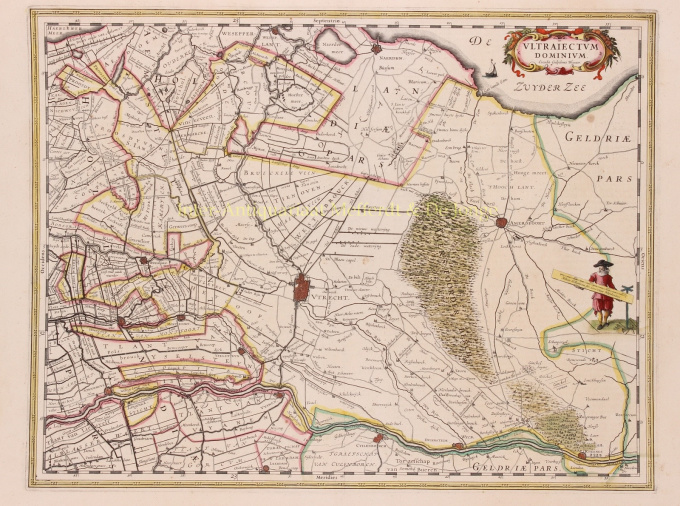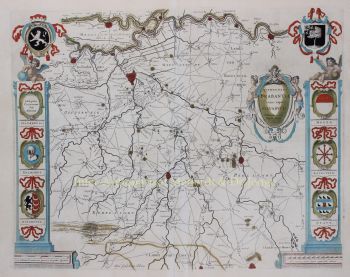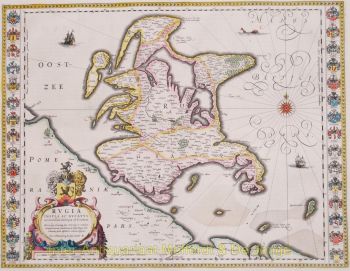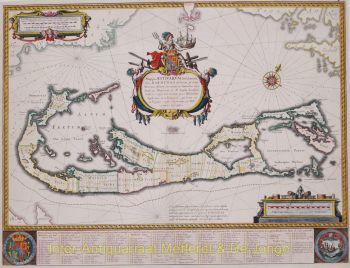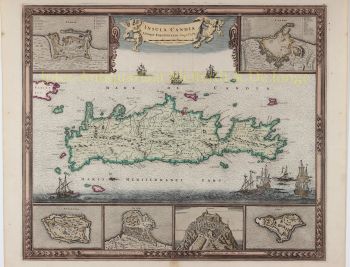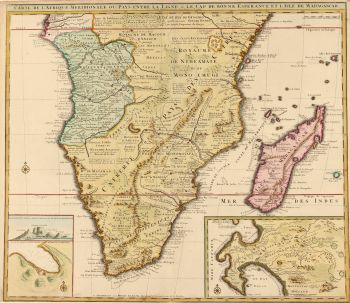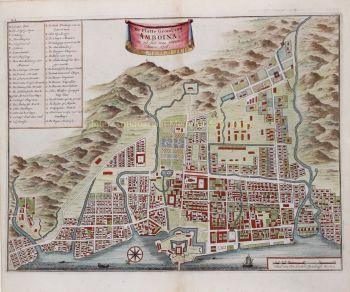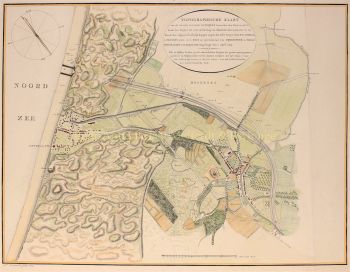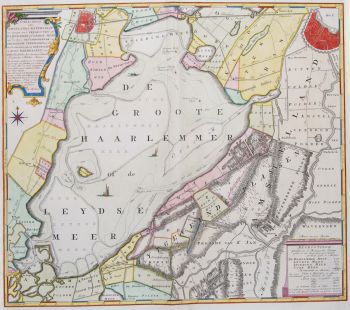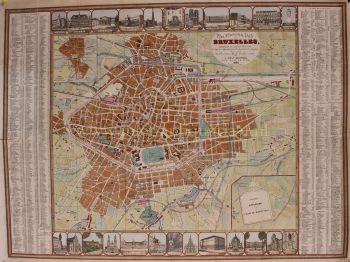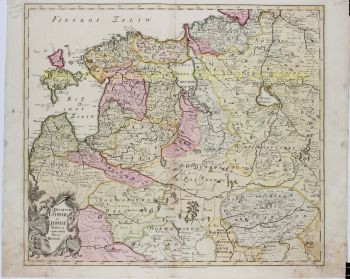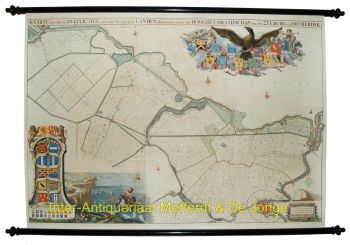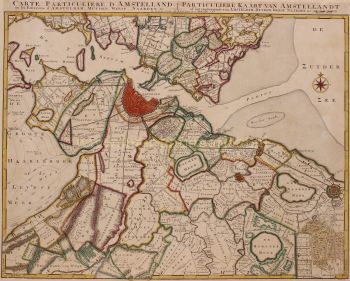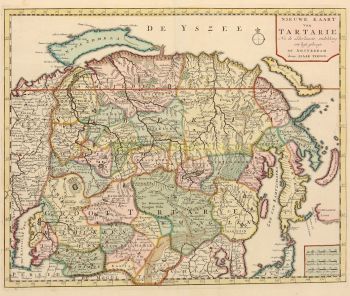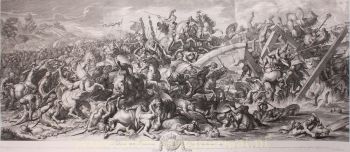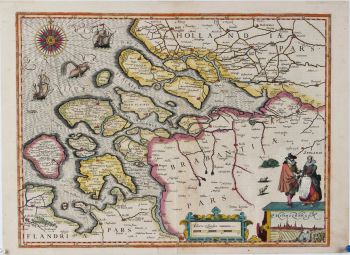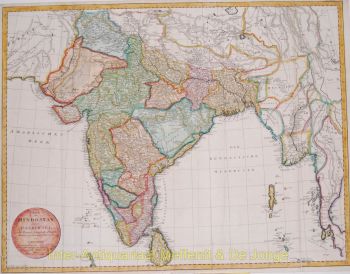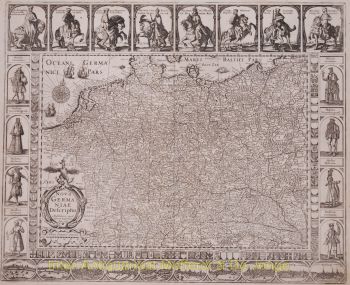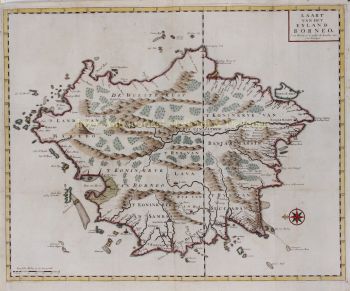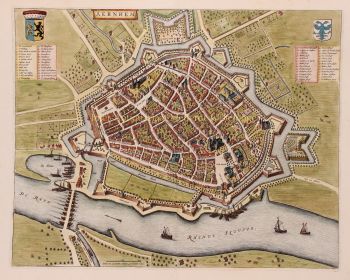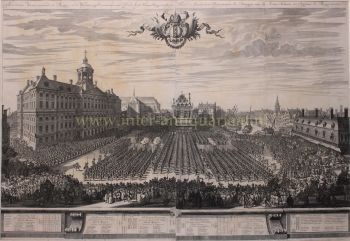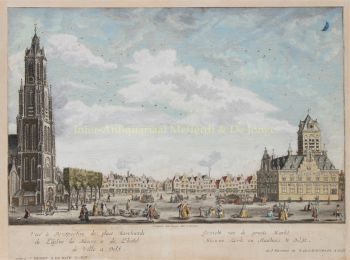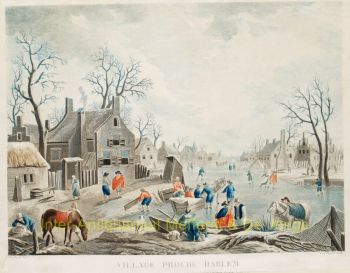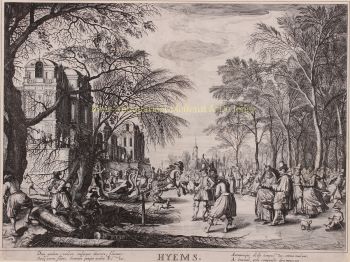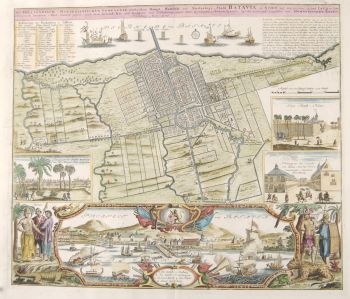Utrecht / Gooi 1635
Willem Janszoon Blaeu
€ 650
Inter-Antiquariaat Mefferdt & De Jonge
- Sobre arte
THE HOLIDAY OF UTRECHT "Ultrajectum Dominium". Copper engraving published in 1635 by Willem Blaeu. Verso: French text. Coloured by hand. Sizes 38 x 49,5 cm. Willem Blaeu made this map based on one by Balthasar Florisz. van Berckenrode from 1620. There were no country houses on the Vecht or in 's-Graveland at that time. Monasteries on the Vecht are still depicted, but by then they had already fallen into ruin. This was the time when canals were dug between towns and existing waterways were made suitable for towing ships. In 1599, a towpath was constructed along the Amstel River from Amsterdam to Uithoorn, and between 1626 and 1628 parts of the Amsterdam-Utrecht section were constructed. The first towpaths were constructed as connections between two cities, but in the course of the 17th century more and more separate towpaths were linked. This is how large canal networks came into being. From 1588 (until the French era), the Utrecht District was one of the provinces of the Republic of the Seven United Provinces. What the map does not tell you is that when it appeared, a plague epidemic was raging in Utrecht, which would not stop until 1638. As much as 15 percent of Utrecht's population would die as a result of this disease. Blaeu was inspired to make an atlas like no other in the world. Financial reasons were secondary; the risk was too great for that. But there was rivalry between the publishers of Blaeu and Janssonius and motives such as prestige and display were at least as important. He wanted to create something that would overwhelm the civilised world in the heyday of Amsterdam's power. Out of this ambition appeared the "Atlas Maior". Price: Euro 650,-
- Sobre artista
"Willem Janszoon Blaeu e seu filho Joan resumiram a 'era de ouro' da cartografia holandesa. Trabalhando durante o século XVII, Willem Blaeu desenhou uma série de mapas inovadores e publicou o primeiro atlas.
Ele nasceu em 1571 em Amsterdã e trabalhou inicialmente como balconista no comércio de arenque da família. No entanto, ele não estava feliz com sua ocupação e saiu de casa em 1594 para estudar matemática com Tycho Brahe, o famoso astrônomo. Blaeu era um bom aluno que impressionou muito seu tutor e, quando seus estudos terminaram, ele voltou para Amsterdã e abriu um negócio como cartógrafo. Seu negócio floresceu e sua reputação cresceu. Ele foi o primeiro cartógrafo a produzir mapas de folha única de muitos países europeus.
Em 1605, ele fez um mapa-múndi de parede, contendo 20 folhas, cada uma com 2,5 metros de largura. Este mapa foi de longe o mais preciso do período e deu uma contribuição notável para o conhecimento da geografia mundial.
Seu mapa permaneceu o mais preciso até 1648, quando seu filho, Joan, que também se tornou um famoso cartógrafo, o atualizou. Mas sua maior conquista foi a produção do primeiro atlas em 1630. O nome Blaeu era na verdade um apelido de família que Willem adotou depois que ocorreu uma confusão entre ele e seu grande rival Joannes Jansonius.
Você está interessado em comprar esta obra de arte?
Artwork details
Related artworks
- 1 - 4 / 8
Artista Desconhecido
A large wall map of Asia by Nicolas de Fer 1647 - 1720
Preço em pedidoZebregs & Röell - Fine Art - Antiques
1 - 4 / 24- 1 - 4 / 12

